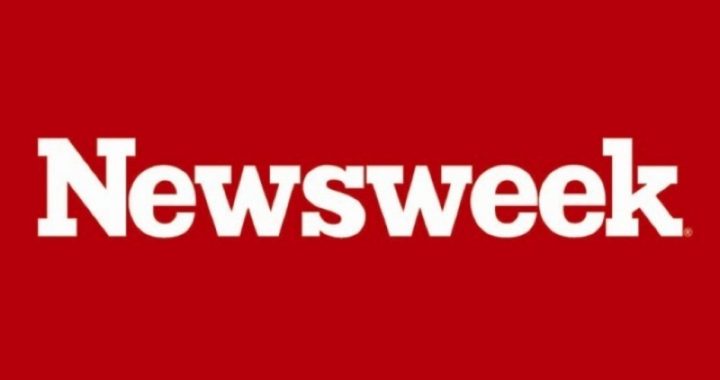
The Wall Street Journal noted the end of an era with the final print edition of Newsweek magazine coming out on Monday, December 31. It will transition to an online-only format with plans to charge subscribers for its content after the first of the year.
The end has been coming for some time. On October 18, Tina Brown, Newsweek’s editor, announced the change on the same day that she gave a eulogy for Robert Hughes, Time magazine’s famed art critic. Both marked the end of an era. Jim Kelly, writing in Vanity Fair called Hughes’ and Newsweek’s demises as the “dwindling cult of authority.”
Owned since 1961 by the Washington Post Company (WPC), Newsweek suffered of late from two emerging forces: a change in how people access the news, and a change in what they wanted to read when they got it. What’s not clear is whether its successor, called Newsweek Global, will be able to make the transition successfully.
In less than two years, from 2007-2009, Newsweek’s revenues dropped 38 percent, which forced WPC to sell it in August 2010 for $1 — with all of its debt — to Sidney Harman, the co-founder of Harman/Kardon, the home and auto audio equipment maker.
A few months later Newsweek merged with the liberal online news and opinion website The Daily Beast in the hopes that the latter could rescue the former from oblivion.
In March 2011, Newsweek editor Tina Brown did a major redesign in an attempt to broaden its subscriber base but without success. She admitted as much in an interview with New York magazine. Michael Kinsley confronted Brown: “Everyone I talked to had the same reaction: If anyone can pull this off, it will be Tina — but no one can pull this off. That turns out to be correct?”
Said Brown:
I think it was a romantic gamble that there was still life to be had for Newsweek. We felt that for the Daily Beast — such a frisky digital brand — to have a print platform as well would be great….
But [everything] was against Newsweek, combined with an unfixable infrastructure and a set of challenges that really would have required five years in an up economy to solve….
Kinsley: What was your vision for it?
Brown: I’ve always been very enamored of European newsmagazines — the Spiegel kind of magazine, which has an energetic, high-low approach to news. But those magazines also need a lot of pages — there’s something about the way a magazine looks and feels when it doesn’t have advertising that is unbelievably disappointing, both as an editor and as a writer. Pages are not meant to be adjacent to one another. They need the advertising to give it body and fullness. There was always that sense of Newsweek being not the full-bodied thing that it ought to be.
They also need revenues to pay the bills. In 2010 Newsweek had revenues of $222 million but was spending $42 million a year just to publish the print editions. And that didn’t include the costs to pay the 300 people on staff to provide content and design services. That year the magazine lost $30 million.
Regarding the future for other print magazines like Time magazine, Brown noted:
It’s really, really difficult for the old behemoths to stay nimble in an era of such disruptive innovation. Elephants can’t tap dance.
New empires can be built so fast, as we saw with Facebook and Google….
[With Time] I personally think that within two or three years, you’re going to be seeing the same story [as Newsweek].
There are two primary problems facing Newsweek and Time magazines: More and more subscribers are abandoning them for news sources on the Internet that are current, and free. And advertisers are right behind the subscribers. As Derek Thompson noted at The Atlantic magazine, “attention is fleeing paper publications even faster than advertising is abandoning them.” At present just seven percent of readers are getting their news from print, compared to radio, TV and the internet. But advertisers are still putting nearly 25 percent of their budgets into print publications. That’s an overweighting that’s changing rapidly.
The other problem is content. A landmark report by two college professors in December 2004 entitled “A Measure of Media Bias” underscored it: The media’s liberal bias was far outside most readers’ comfort zones. The authors concluded:
All of the news outlets except Fox News … and the Washington Times received a score to the left of the average member of Congress….
Our results show a strong liberal bias….
These statistics suggest that journalists, as a group, are more liberal that any congressional district in the country [including] Berkeley, [California] and Cambridge [Massachusetts].
As Anthony Wile, a trenchant observer of the international scene, and one who has recognized the mainstream media as a transmission belt for elite “memes” such as global warming and the war on terror, noted in response to Newsweek’s announcement:
The power elite now struggles with a robust alternative media that has blown apart most of its dominant social themes from global warming to the war on terror to monopoly fiat central banking itself. The job of its writers and editors — most of whom didn’t fully understand what they were doing — was to promote the vision of a frightening world spinning out of control.
The solutions were to feature an ever more centralized global governance led by the UN and supported by financial facilities such as the IMF and World Bank. Out of chaos … order. An international order.
But as people learn more about the way the World Really Works, they are increasingly apt to reject — consciously or not — the doom-laden, leveling visions of publications such as Newsweek.
A graduate of Cornell University and a former investment advisor, Bob is a regular contributor to The New American and blogs frequently at www.LightFromTheRight.com, primarily on economics and politics. He can be reached at [email protected].



